NAKED LUNCH. Shocking, disgusting, disturbing masterpiece
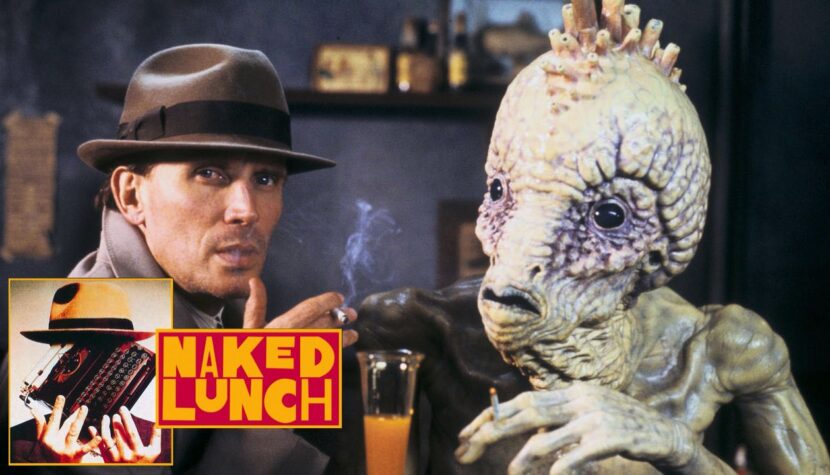
– Have you ever taken cocaine?
– Oh my God, yes! And a lot of it.
But only when I was addicted to heroin.
William took out a revolver, and his wife hesitantly placed a glass with an unfinished drink on her head. Burroughs aimed precisely and fired from two meters. Unfortunately, the glass did not shatter as expected. Surprised, William realized after a moment that the bullet had lodged permanently in his wife’s forehead, and she fell dead on the spot. It was the tragic beginning of the literary career of a leading experimenter of the American artistic bohemia and an author of Naked Lunch.
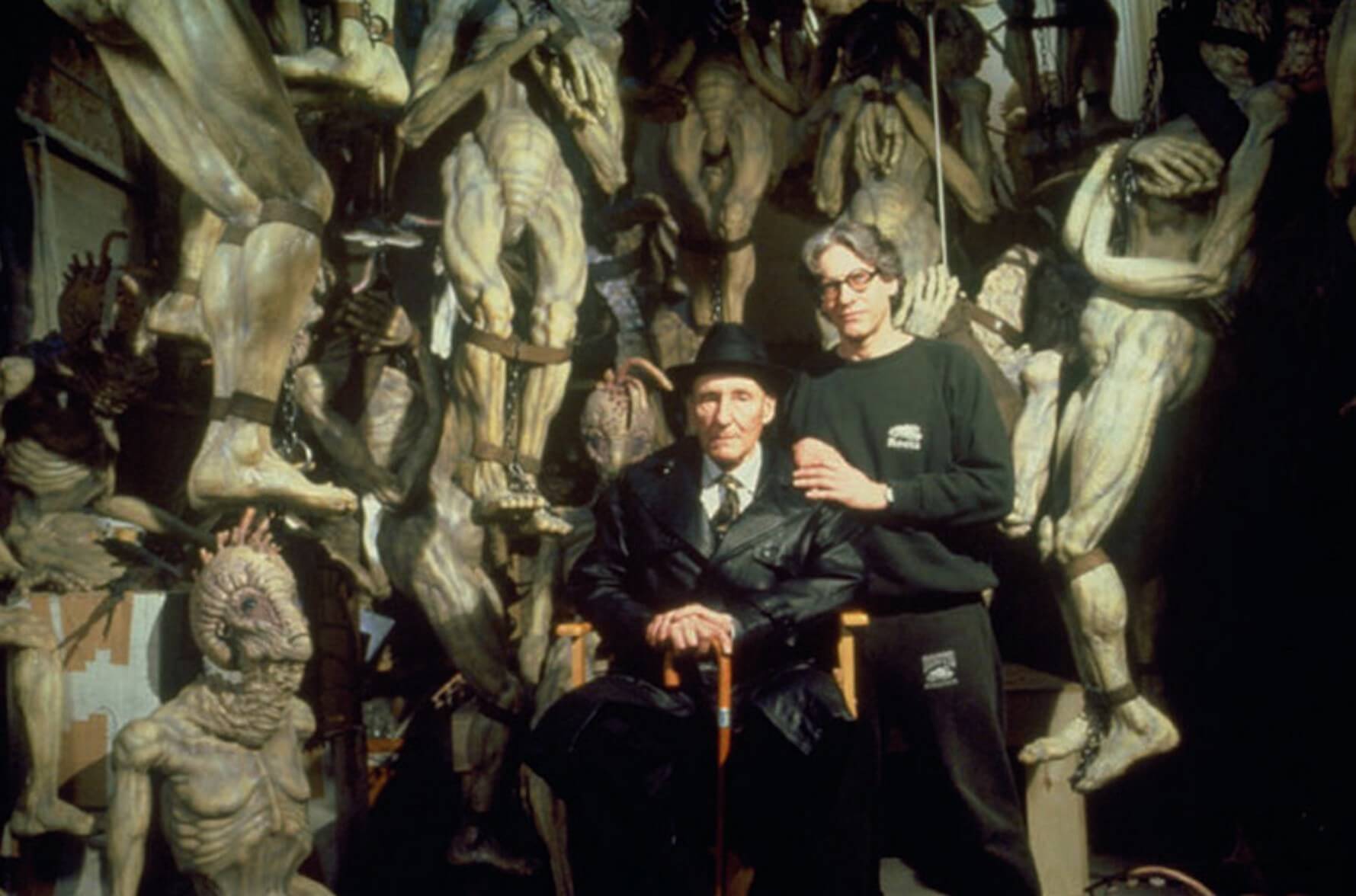
They call me the exterminator. I used to poison cockroaches and watch their belly dance in yellow insecticide. My current task: find the living and exterminate them. Destroy not the bodies, but the matrices,” confesses Burroughs in his narcotic novel.
Naked Lunch, on which David Cronenberg created an equally enigmatic, delirious world. The film, made in 1991, is a meeting of two artists fascinated by the disgusting side of human nature: wild, unrestrained violence, perverse sex, repulsive physicality of living bodies. Both – one through written word, the other through celluloid tape – explored the state of enslaved human consciousness. It is not the disease or narcotic addiction that interests them, but rather the experiencing of these, the stimulation of the senses, the creation of a new kind of sensitivity. They are fascinated by a kind of mutation of human emotions, experiences, and perceptions of the world. Cronenberg, through diseases, aims to portray the loneliness and isolation of characters: the characters of Crash and Shivers operate in erotic frenzy, in The Fly, Jeff Goldblum transforms into a repulsive fly, in eXistenZ, ubiquitous manipulation blurs the boundaries of reality, and Spider is a projection of a schizophrenic soul. “I love sex as a venereal disease,” the famous Canadian once said, “I would like to adopt the perspective of a virus. I identify with parasites causing a fever of sexual aggression”.
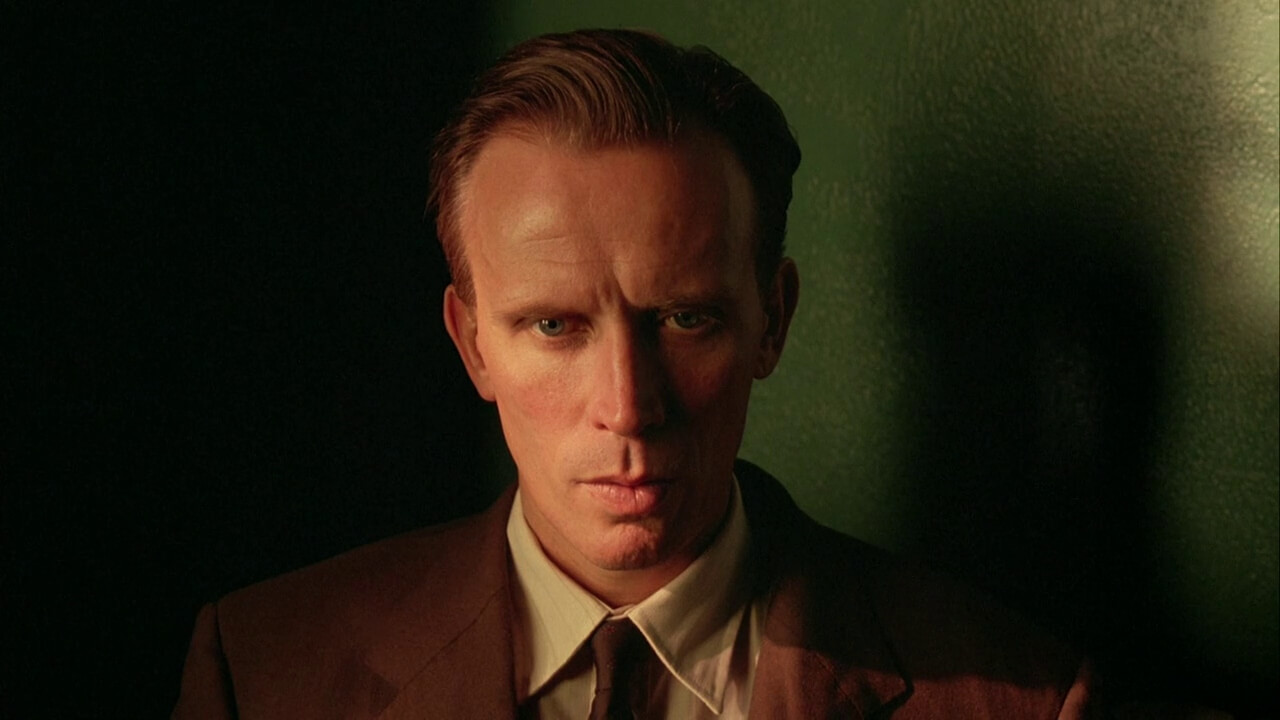
Naked Lunch is a screen adaptation of heroin-induced hallucinations. Very suggestive, original, and unusual. Cronenberg combined novelistic threads with the biography of its author, resulting in an ambiguous, even shocking picture. William Burroughs wrote his book in the midst of his narcotic addiction. It aroused admiration in some and contempt in others, but it permanently inscribed itself into the canon of post-war American literature. The key to understanding Naked Lunch is Burroughs himself. “Tall, strange, and impenetrable, because he looks ordinary, like a shy bank clerk with a patrician face and narrow, pale lips,” wrote Jack Kerouac, a representative of the Beat Generation, about him. He took everything: morphine, heroin, Dilaudid, Eukodal, Pantopon, Diocodid, Diosan, opium, Demerol, Dolofen, Palfium, using them in every possible way: orally, intravenously, intramuscularly, rectally. He despised psychedelics like LSD because he considered such drugs unworthy of real men. He took everything consciously, aware of his addiction. For this reason, he suffered, but also admitted that addiction was his inspiration.

His first novel, Junkie, is a record of gloomy states of consciousness. Naked Lunch is already an expressive work describing the fictional world of Interzone. It is an experimental novel, especially in terms of form. Burroughs cut the text into paragraphs, rearranged them in a different order, added fragments of other, unrelated texts. This may be reminiscent of the artistic collage of the Dadaists and the surrealist painting transferred to the written word. Burroughs was not just a writer; he was also highly regarded as a voice in many intellectual discussions bordering on sociology and philosophy. One of his famous slogans was, “Language is a virus.” Humans are the only animals, Burroughs wrote, who have imprisoned time. They have imprisoned it thanks to the invention of the written word, which prevents the loss of knowledge: successive generations pass on their accumulated information.
Horses with gaping mouths expose large yellow teeth, cows roar, dogs howl, copulating cats squeal like babies, giant wild boars with bristling fur scream loudly: “Hooray! Hooray!”
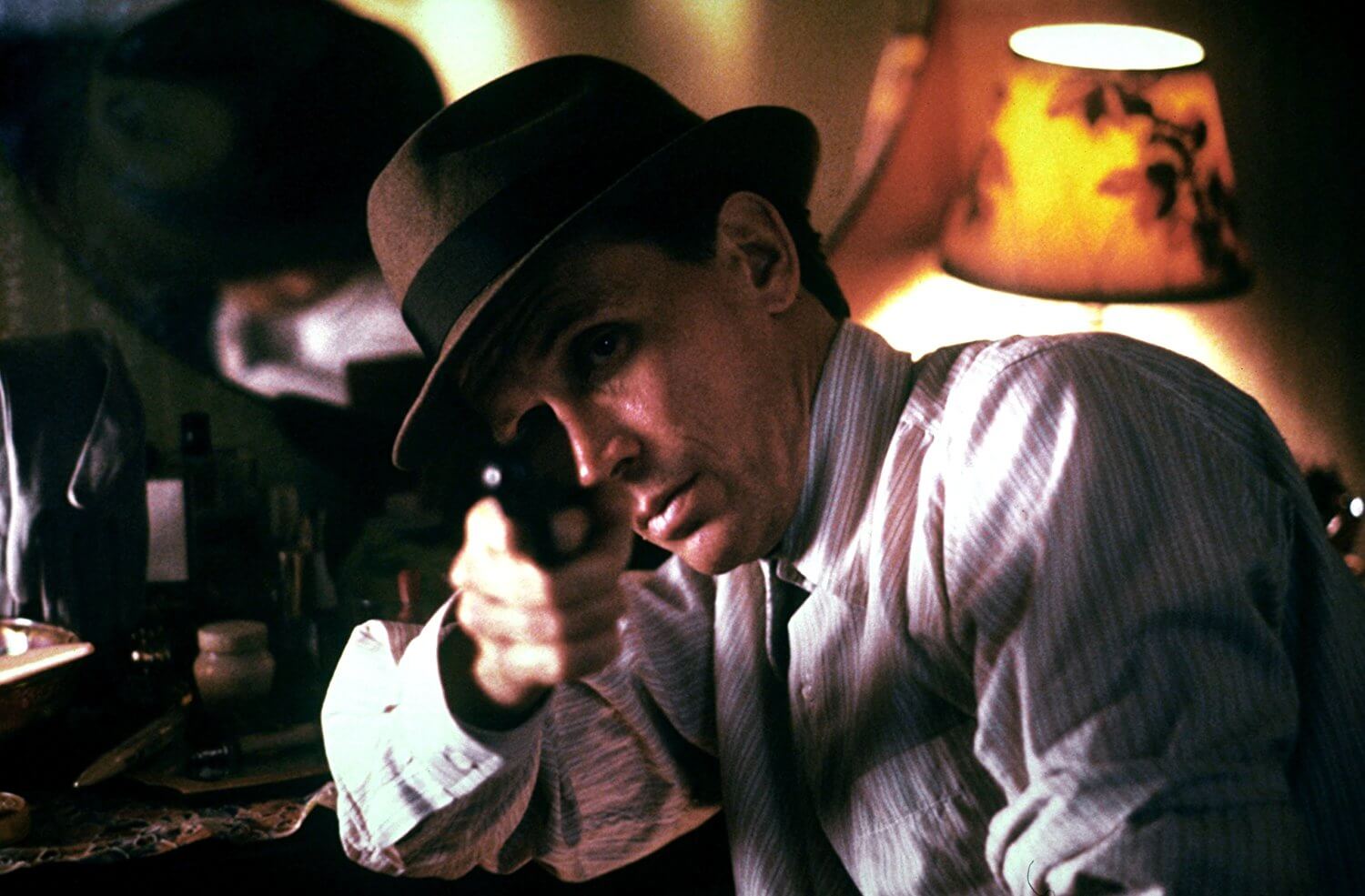
But let’s get back to the movie. “Nothing is true, everything is allowed,” proclaims the motto of David Cronenberg’s film. Reality merges with hallucination, truth mixes with falsehood. In the world of Interzone, narcotic hallucinations are not devoid of authentic emotions. The film’s protagonist, played by Peter Weller, is an exterminator specialist. He kills bugs by injecting kilograms of lethal powder between furniture, moldings, and under the floor. This powder turns out to be a drug that everyone snorts and becomes addicted to, including his cadaverous wife (Judy Davis) and himself… I don’t know if it makes sense to summarize the whole story, born from the narcotic delirium of the main character.
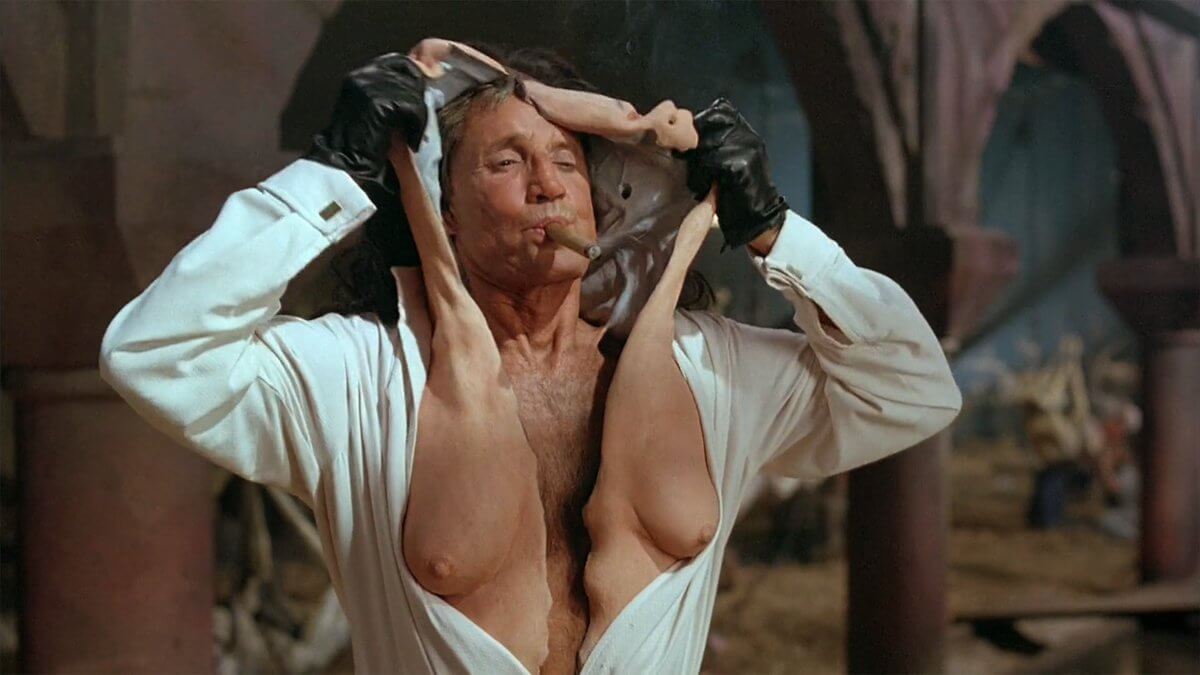
Naked Lunch offers a wide range of narcotic nightmares born from the imaginations of William Burroughs and David Cronenberg. Large, carnivorous Brazilian centipedes, gelatinous, slimy mugwumps, toothed vagina, copulating typewriter machine, humanoid monster also copulating, this time in a “threesome” with humans. The set is complemented by the sight of a stinking slaughterhouse of giant centipedes, from which a strong drug is produced, and a talking rectum. In addition to these naturalistic images, you can see the paranoia that the main character falls into. Under the influence of cockroach poison, he sees a giant bug revealing secrets about his wife, who turns out to be an Interzone agent. The investigation leads him to surprising solutions: his spouse is not so much a spy as not a woman (or a man), a homosexual, a bug, and finally, a centipede in the service of other blond-haired bugs (Julian Sands), raping young gays in cages. It doesn’t sound strange. It’s pure paranoia of an enslaved mind.

Interzone is a land devoid of any rules, a distorted face of reality, a projection of a heroin-induced mind and imagination. “Morality is nonsense,” says Burroughs. Indeed, in the junkie’s world, moral principles undergo blurring, reevaluation. Surrealistic hallucinations too often fall into paths trodden by emotional reality, and it is precisely in this pain experienced by the addict that lies the lack of awareness of where the border between reality and narcotic dream lies. That’s why Burroughs believed that words can control the human mind. Because words can organize the world, can discover the values of individual elements of the world. Drugs may control the body, but the word, language, is able to assemble all events in a sensible, true way, despite the delirious mood. Until the end of his days (he died on August 2, 1997, at the age of 87), Burroughs was an advocate of unrestricted, unbridled access to drugs, which he considered a manifestation of freedom. And, of course, its source.
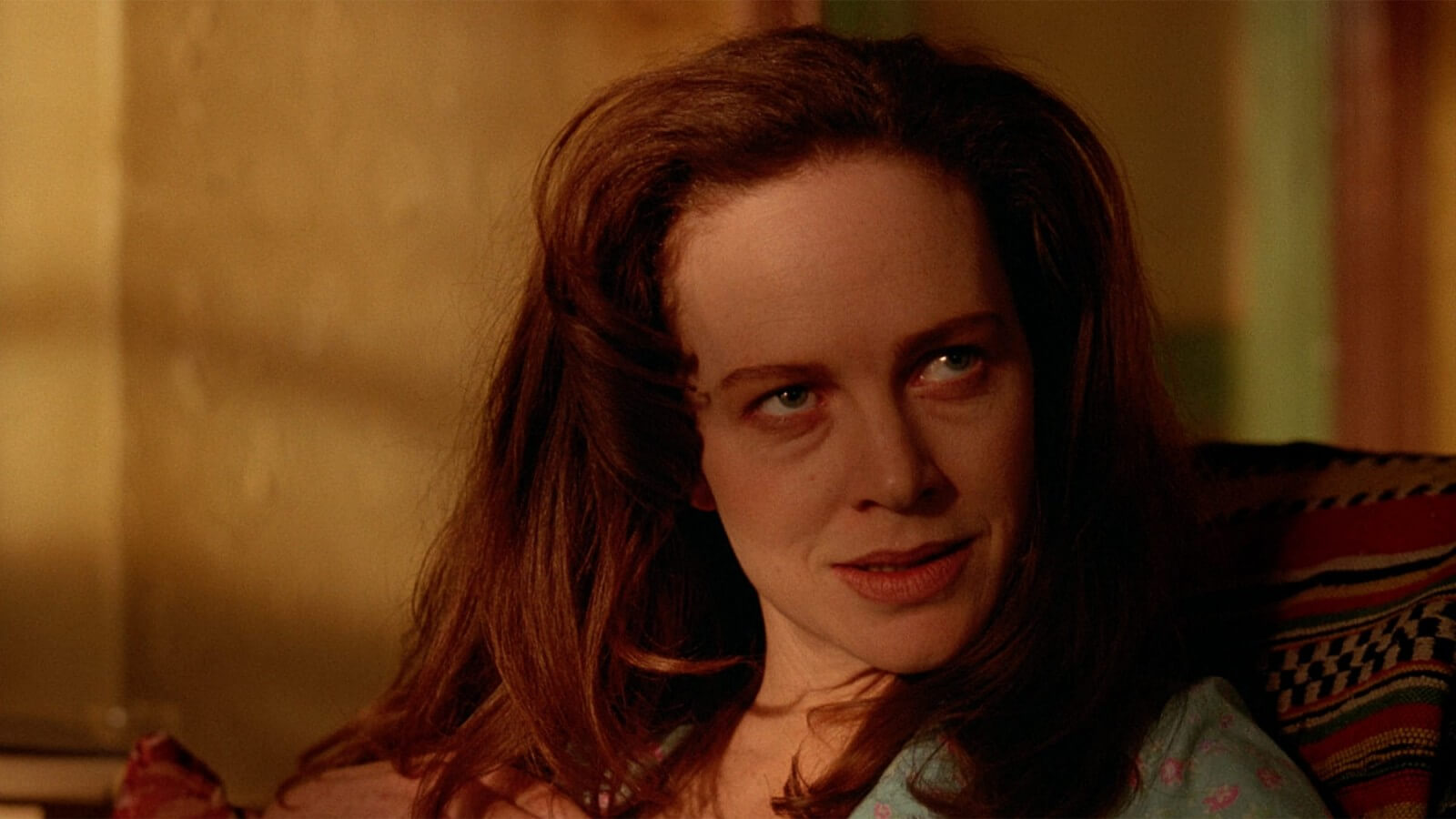
David Cronenberg’s intellectual ambitions in connection with Naked Lunch are very surprising for the viewer. He created a work that is not subject to a clear assessment, and it is even difficult to evaluate in any way. The film is shocking, undoubtedly disgusting and disturbing for some. It may seem like gibberish, but, in my opinion, it would be an entirely unfair assessment. Cronenberg boldly approached Burroughs’ narcotic nightmare: fascination with the mysterious, pathological side of human nature allowed him to capture and depict the thoughts of a person under the influence of the hardest drug – heroin. Terrifying and fascinating.

